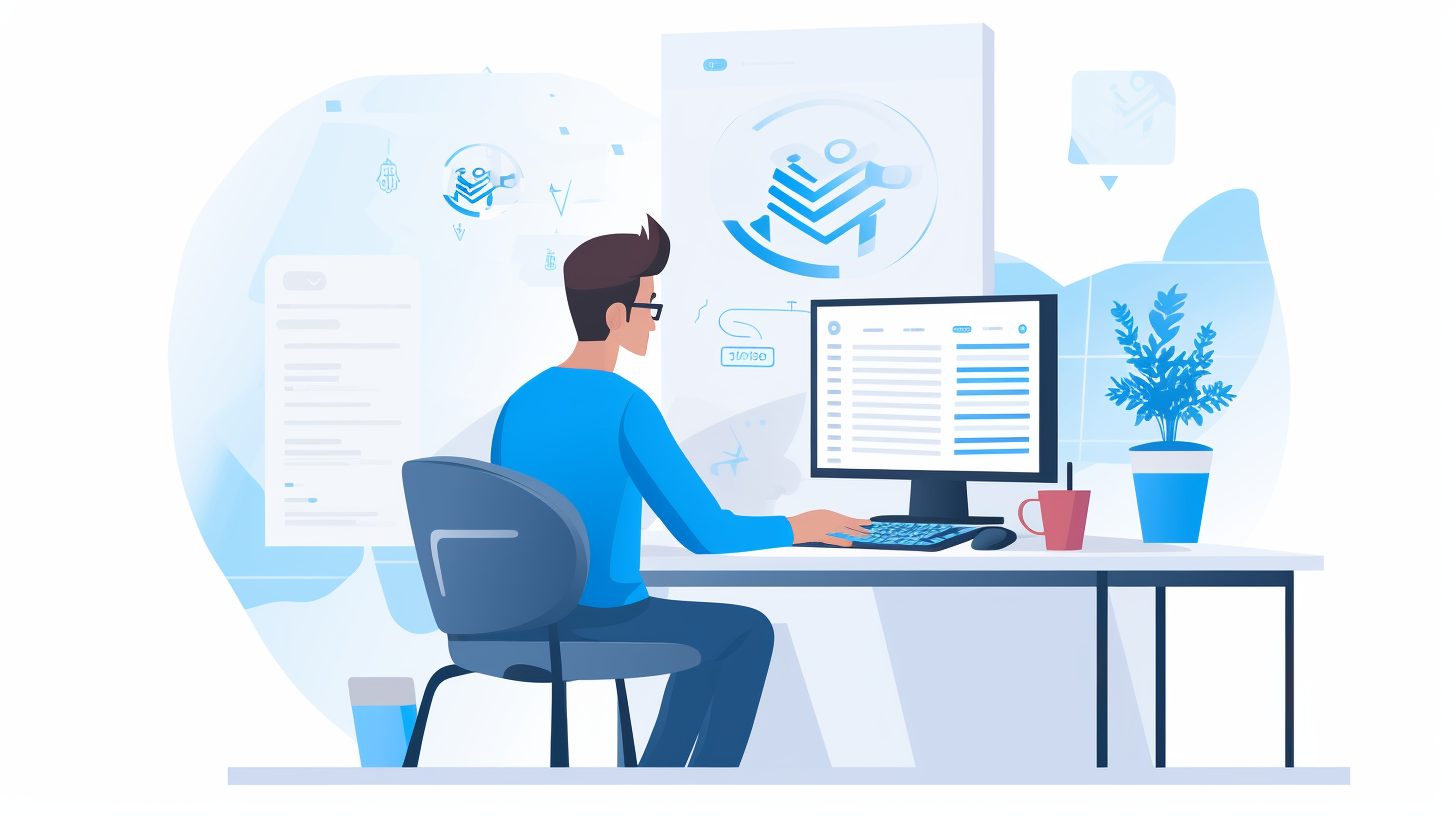欢迎阅读这篇关于“通过定期页面更新确保 WordPress 网站稳定性”的文章。如果您是网站所有者或 WordPress 用户,您可能已经知道保持网站更新的重要性。然而,这不仅仅是更新网页内容;它远不止于此。定期更新网站页面对于网站的稳定性、安全性、性能和整体成功至关重要。
在本文中,我们将探讨页面更新的重要性以及它们如何使您的 WordPress 网站受益。我们还将讨论页面更新的规划和安排、进行网站审核、安全地执行更新、监控和测试、优化网站性能、确保兼容性和响应能力、利用自动化工具以及定期维护的重要性。
因此,无论您是刚开始使用 WordPress 还是已经使用了一段时间,本文都将为您提供宝贵的见解和实用技巧,以确保您的 WordPress 网站的稳定性和成功。让我们开始吧!
了解页面更新的重要性
在快节奏的互联网世界中,保持领先地位至关重要。您的 WordPress 网站也不例外。定期更新页面对于维护网站的稳定性、安全性和相关性至关重要。在本节中,我们将探讨页面更新的重要性以及它们如何有益于您的整体网站性能。那么,让我们开始吧!
加强安全与保护
页面更新至关重要的主要原因之一是出于安全目的。互联网上充斥着网络威胁,过时的页面可能会让您的网站容易受到攻击。定期更新您的页面可确保您拥有最新的安全补丁和保护措施。
提高网站性能
页面更新在提高网站性能方面也发挥着重要作用。更新页面时,您可以优化页面以缩短加载时间,从而提高整体用户体验。加载缓慢的网站可能会导致更高的跳出率,并对您的搜索引擎排名产生负面影响。
保持相关性和竞争力
数字环境在不断发展,为了保持相关性和竞争力,您需要为访问者提供最新、最新的内容。定期更新您的网页可以帮助您掌握最新的行业趋势、新闻和变化。这也让访问者有理由不断回到您的网站获取有价值的信息。
更新网页并非一次性任务;它是一个持续的过程,需要仔细规划和执行。下一部分将指导您完成规划和安排网页更新的有效过程,确保您的网站保持稳定和最新状态。
规划和安排页面更新
规划和安排 WordPress 网站的页面更新对于维护其稳定性和确保良好的用户体验至关重要。通过积极主动和有条不紊地进行更新,您可以避免最后一刻或随意更新带来的麻烦。以下是规划和安排页面更新时要考虑的一些关键步骤:
1. 创建内容日历
内容日历是一种非常有用的工具,可帮助您保持井然有序并提前规划。它允许您规划内容更新,包括博客文章、登录页面和任何其他重要的网站更改。创建内容日历时,请考虑以下事项:
- 频率:确定更新页面的频率。可以是每月、每两周,甚至每周,具体取决于您的内容策略和资源。
- 主题与话题:确定您想要在更新中涵盖的主题和话题。这将帮助您将内容与整体营销目标保持一致。
- 关键词:研究每次更新的相关关键词,以便为搜索引擎优化您的页面。
2. 识别高优先级页面
并非您网站上的所有页面都需要立即关注。确定需要定期更新的高优先级页面非常重要。以下是一些示例:
- 主页:主页通常是访客对您网站的第一印象。定期更新内容、图片和优惠,让主页保持新鲜和吸引人。
- 产品或服务页面:如果您提供产品或服务,请确保这些页面上的信息、价格和任何可用的促销信息都是最新的。
- 联系和关于页面:这些页面为您的访客提供重要信息。向访客提供准确的联系方式和相关公司信息。
3. 设定现实的时间表
在规划和安排页面更新时,设置切合实际的时间表至关重要。请考虑以下因素:
- 内容创作:留出足够的时间来创作内容,确保内容质量高且符合您的整体营销策略。
- 与团队成员的协调:如果您与团队合作,请考虑他们的可用性和工作量。
- 测试和质量保证:在将更新部署到您的实时网站之前,留出充足的时间进行测试和质量保证。
通过设置切合实际的时间表,您可以确保更新得到适当的规划和执行,而不会仓促或影响质量。
请记住,规划和安排页面更新是一个持续的过程。随着您从用户反馈和网站分析中获得见解,您可以改进方法并调整内容日历。通过遵循这些步骤,您将能够很好地维护稳定且最新的 WordPress 网站。
进行网站审核
在维护稳定的 WordPress 网站时,定期进行网站审核至关重要。网站审核可帮助您识别潜在问题并确保您的网站运行顺畅。以下是进行网站审核时需要考虑的一些关键方面:
检查断开的链接和错误
断开的链接和错误会对用户体验和您网站的 SEO 产生负面影响。定期检查断开的链接并及时修复至关重要。您可以这样做:
- 使用在线工具或 WordPress 插件扫描您的网站以查找断开的链接。
- 检查您的内容并更新所有过时的链接,如果它们不再相关,请删除它们。
- 监控您网站的错误日志并修复任何重复出现的错误。
审查内容的准确性和相关性
定期检查内容可确保内容为访问者提供准确且有价值的信息。检查内容的方法如下:
- 通读每个页面和博客文章,检查是否有过时的信息。
- 确保内容是最新的、反映您当前的产品并与您的品牌信息相符。
- 寻找机会改进和优化您的内容以进行 SEO。
分析网站指标
了解网站的性能对于做出明智的决策和优化网站至关重要。以下是分析网站指标的方法:
- 安装并设置 Google Analytics 等工具来跟踪流量、跳出率和转化率等重要指标。
- 回顾您的网站在一段时间内的表现,确定趋势,并寻找需要改进的领域。
- 使用数据做出数据驱动的决策,以优化您的网站以获得更好的性能。
通过进行网站审核,您可以发现潜在问题并确保 WordPress 网站正常运行。定期检查网站是否有断开的链接、更新内容以确保准确性和相关性以及分析网站指标以做出明智的网站优化决策非常重要。
安全地执行更新
对 WordPress 网站进行更新对于维持其稳定性和确保最佳性能至关重要。但是,务必谨慎进行更新,以避免网站出现任何潜在问题或中断。以下是安全执行更新的一些关键步骤:
备份网站文件和数据库
在对 WordPress 网站进行任何更新之前,必须备份网站文件和数据库。此步骤可作为安全网,以防更新过程中出现任何问题。您可以使用 UpdraftPlus 或 BackWPup 等插件来自动执行备份过程并安全地存储备份文件。
更新主题和插件
主题和插件是 WordPress 网站的组成部分,提供功能和设计选项。定期更新它们有助于确保您拥有最新的功能、错误修复和安全补丁。以下是安全更新它们的方法:
- 更新主题: 转到 WordPress 仪表板中的外观 → 主题部分。如果您安装的主题有可用更新,只需单击“更新”按钮即可。
- 更新插件: 导航到插件 → 已安装插件部分。查找任何有可用更新的插件,然后单击每个插件旁边的“立即更新”链接。请记住一次更新一个插件以尽量减少冲突。
测试网站功能
更新主题和插件后,测试网站的功能以确保一切正常运行至关重要。此步骤有助于识别更新中可能出现的任何问题或冲突。您可以按照以下方法进行测试:
- 检查前端: 访问您网站的前端并浏览不同的页面以确保所有功能和特性均正常运行。
- 测试后端: 登录 WordPress 管理仪表板并测试各种元素(如表单、小部件以及主题或插件提供的自定义功能)的功能。
- 尝试不同的设备: 在台式机、笔记本电脑、平板电脑和手机等不同设备上测试您的网站,以确保其响应能力和兼容性。
请记住,如果您在测试阶段遇到任何问题,您可以随时恢复到之前创建的备份。如果更新过程中出现问题,这可以提供安全保障。
“在对 WordPress 网站进行任何更新之前,请务必记得创建备份。小心谨慎总比事后后悔好!” – 匿名的
通过遵循这些步骤,您可以安全地对 WordPress 网站进行更新,从而最大限度地降低中断或问题的风险。不要忘记定期更新您的主题、插件和 WordPress 核心,以确保您的网站保持安全、优化和最新。
监控和测试
实施计划的页面更新后,持续监控和测试 WordPress 网站以确保其稳定性至关重要。监控和测试对于识别可能出现的任何问题或潜在问题至关重要。通过定期检查网站的运行状况、进行用户测试和实施 A/B 测试,您可以优化网站的性能并改善用户体验。
定期监控网站健康状况
监控 WordPress 网站的运行状况需要关注其性能和功能的各个方面。以下是需要关注的一些关键领域:
- 网站正常运行时间:监控网站的正常运行时间,确保访问者随时可以访问。停机时间监控工具可以在网站离线时提醒您,以便您立即采取行动。
- 服务器响应时间:检查服务器响应时间,确保您的网站加载速度快。加载时间慢会对用户体验和搜索引擎排名产生负面影响。
- 错误监控:跟踪您网站上的任何错误消息或断开的链接。定期检查 404 错误并及时修复,以确保流畅的用户体验。
进行用户测试
用户测试涉及从目标受众的角度评估您网站的可用性和效率。通过收集真实用户的反馈和见解,您可以确定任何痛点和需要改进的地方。以下是进行用户测试的一些方法:
- 可用性测试:请用户在您的网站上执行特定任务并观察他们的行为。记录他们遇到的任何困难或困惑,并利用此反馈做出必要的改进。
- 反馈调查:在您的网站上实施反馈调查,以收集访客的意见。询问他们的体验、满意度以及他们可能提出的任何建议。
- 热图分析:利用热图软件跟踪网站上的用户行为。热图以视觉方式展示用户点击、滚动和花费时间最多的位置。这些数据可以帮助您确定网站哪些区域最吸引人,哪些区域可能需要改进。
实施 A/B 测试
A/B 测试(也称为拆分测试)涉及比较网页的两个版本,以确定哪个版本的效果更好。通过测试标题、图片、颜色或号召性用语等不同元素,您可以做出基于数据的决策,以优化网站的性能。以下是实施 A/B 测试的一些技巧:
- 定义目标:明确列出您希望通过 A/B 测试实现的目标。无论是增加转化率、降低跳出率还是提高点击率,制定具体目标都有助于您衡量测试的有效性。
- 一次测试一个元素:要准确确定每个更改的影响,请一次只测试一个元素。这样您就可以隔离变量并了解它对用户行为的直接影响。
- 分析数据:从 A/B 测试中收集到足够的数据后,分析并比较结果。寻找模式和趋势以确定哪些变体表现更好,并根据调查结果做出数据驱动的决策。
定期监控和测试对于维护 WordPress 网站的稳定性和有效性至关重要。通过密切关注网站的运行状况、进行用户测试和实施 A/B 测试,您可以确保网站不断优化,以获得最佳性能和用户满意度。
优化网站性能
确保 WordPress 网站稳定性和成功的关键因素之一是优化其性能。加载速度快且高效的网站可以提供更好的用户体验、提高 SEO 排名并提高转化率。以下是一些优化 WordPress 网站性能的策略:
提高页面加载速度
- 优化图像: 大型图像文件会严重降低网站速度。上传图像前请先压缩图像,或使用类似 斯马什 自动优化您的图像。
- 最小化 JavaScript 和 CSS: 减少网站上的 JavaScript 和 CSS 文件数量。将多个文件合并为一个,然后将其最小化以减小其大小。
- 浏览器缓存: 启用浏览器缓存,将图片和 CSS 文件等资源存储在访问者的设备上。这可以减少访问者返回您的网站时的 HTTP 请求数量。
- 内容分发网络 (CDN): CDN 将您网站的静态文件分发到全球多个服务器上。这缩短了服务器与访问者之间的距离,从而缩短了加载时间。
优化图像和媒体
- 图像压缩: 压缩图像以减小文件大小而不影响质量。插件如下 短像素 或者 EWWW图像优化器 可用于自动优化 WordPress 网站上的图像。
- 延迟加载: 实现图像和视频的延迟加载。这意味着媒体仅在需要时加载,从而提高页面的初始加载速度。
- 视频优化: 使用 YouTube 或 Vimeo 等视频托管平台将视频嵌入您的网站。这可以减少服务器的压力并缩短页面加载时间。
实现缓存
- 页面缓存: 使用以下插件在 WordPress 网站上启用页面缓存 W3 总缓存 或者 WP超级缓存。这会生成页面的静态 HTML 文件并提供给访问者,从而减少了生成动态页面的需要。
- 对象缓存: 实施对象缓存,将经常访问的对象(如数据库查询)存储在服务器内存中。这可以减少服务器负载并缩短响应时间。
- 数据库缓存: 使用类似插件 WP-优化 或者 WP火箭 优化您的 WordPress 数据库并减少访问数据所需的查询。
请记住,优化网站性能是一个持续的过程。定期监控网站的性能指标并根据需要进行调整,以确保网站保持快速高效。通过优化良好的网站,您可以提供更好的用户体验并提高网站在搜索引擎排名中的可见性。
确保兼容性和响应能力
在维护 WordPress 网站时,确保兼容性和响应性至关重要。由于用户可以使用多种设备和浏览器,因此您的网站在所有平台上的外观和功能都至关重要。确保兼容性和响应性不仅可以改善用户体验,还有助于搜索引擎优化。以下是确保 WordPress 网站兼容性和响应性的一些关键步骤:
检查跨浏览器兼容性
-
不同的浏览器对网站的解释和渲染方式不同,这可能会导致用户体验不一致。在 Chrome、Firefox、Safari 和 Edge 等流行浏览器上测试您的网站非常重要,以确保它在每个浏览器中都能正常显示和运行。
-
使用跨浏览器测试工具(如 BrowserStack 或 Sauce Labs)轻松地在多个浏览器和版本上测试您的网站。
-
检查任何特定于浏览器的怪癖或问题,并进行必要的调整,以确保在所有平台上获得一致的体验。
验证移动响应能力
-
随着移动浏览的兴起,您的网站必须完全响应并针对移动设备进行优化。
-
检查您的网站在具有不同屏幕尺寸和分辨率的各种移动设备上的显示情况。
-
通过调整浏览器窗口大小或使用移动测试工具(例如 Google 的移动设备友好性测试)来测试您的网站的响应能力。
-
优化您网站的布局、字体大小和移动设备导航,确保用户可以在智能手机或平板电脑上轻松阅读和浏览您的网站。
在不同设备上测试
-
除了在不同的浏览器和移动设备上进行测试之外,在不同的操作系统和设备上测试您的网站也很重要。
-
在 Windows、macOS、iOS 和 Android 等不同的操作系统上测试您的网站,以确保兼容性。
-
在桌面电脑、笔记本电脑、平板电脑和智能手机等不同设备上进行测试,以确保您的网站在所有设备上都能正常显示和运行。
-
考虑使用响应式设计框架,例如 Bootstrap 或 Foundation,它们具有跨多种设备的内置兼容性。
确保 WordPress 网站的兼容性和响应能力对于提供无缝的用户体验和提高搜索引擎排名至关重要。通过检查跨浏览器兼容性、验证移动响应能力以及在不同设备上进行测试,您可以确保您的网站在所有平台上的外观和功能都完美无缺。
请记住,随着越来越多的用户通过各种设备和浏览器访问网站,保持最新状态并适应他们的需求非常重要。通过确保兼容性和响应能力,您可以创造积极的用户体验并让访客继续关注您的 WordPress 网站。
利用自动化工具
自动化工具在简化更新和维护 WordPress 网站的过程方面非常有用。它们可以通过自动执行重复任务并确保您的网站保持稳定和最新来节省您的时间和精力。以下是自动化工具可以提供帮助的一些方式:
- 自动更新和备份: 自动化工具提供的主要功能之一是能够自动更新您的 WordPress 核心、主题和插件。这些更新通常包含错误修复、安全补丁和新功能,可以提高您网站的性能和安全性。自动化工具可以在流量较低的时段安排这些更新,以最大限度地减少对用户的干扰。此外,这些工具可以在执行任何更新之前自动备份您的网站,以防出现任何问题,从而提供安全保障。
- 利用版本控制系统: 版本控制系统(例如 Git)在管理网站代码库时非常有用。它们允许您跟踪更改、与他人协作,并在需要时轻松回滚到以前的版本。自动化工具可以与版本控制系统集成,从而更轻松地管理和部署对网站的更改。它们还可以自动将更新部署到暂存环境进行测试,然后再将其推送到您的实时网站。
- 实施测试和质量保证: 测试是确保网站更新后正常运行的关键步骤。自动化工具可以包含自动测试网站不同方面(例如链接、表单和页面速度)的功能。它们可以生成报告,突出显示需要解决的任何问题,让您在影响用户之前快速解决这些问题。通过自动化测试和质量保证,您可以确保网站保持稳定且用户友好。
将自动化工具整合到您的 WordPress 网站维护中可以带来许多好处。它不仅可以节省您的时间和精力,还可以帮助减少人为错误并提高网站的整体稳定性和性能。通过利用这些工具,您可以专注于业务的其他重要方面,而将日常维护任务留给自动化。
“自动化是任何高效 WordPress 维护策略的重要组成部分。它让您可以更聪明地工作,而不是更辛苦地工作,并确保您的网站保持稳定和安全。”
定期维护的重要性
定期维护对于任何 WordPress 网站的稳定性和使用寿命都至关重要。就像汽车需要定期更换机油和维护才能正常运行一样,您的网站也需要持续关注才能保持平稳运行。定期维护有助于确保您的网站是最新的、安全的并且性能最佳。
定期更新 WordPress 核心
定期维护的最重要方面之一是保持 WordPress 核心更新。WordPress 会定期发布更新,包括错误修复、安全增强功能和新功能。通过定期更新 WordPress 核心,您可以确保您的网站保持安全并免受潜在漏洞的侵害。
清除未使用的插件和主题
随着时间的推移,您的 WordPress 网站上可能会积累大量未使用的插件和主题。这些未使用的元素可能会减慢您的网站速度并可能造成安全风险。定期检查并删除不再使用的插件或主题非常重要。通过这样做,您可以优化网站的性能并降低漏洞风险。
清理数据库
WordPress 网站的数据库保存着与网站相关的所有内容和数据。随着时间的推移,数据库可能会被不必要的数据(例如帖子修订、垃圾评论和过期的临时数据)所淹没。这些不必要的项目会增加数据库的大小并降低网站速度。定期清理数据库可确保其保持高效并优化性能。
定期维护不仅仅是为了保持您的网站最新和安全。它还可以帮助您改善整体用户体验并保持积极的在线形象。通过执行定期维护任务,您可以:
- 提升搜索引擎排名: 像 Google 这样的搜索引擎青睐维护良好且定期更新的网站。通过保持网站更新和安全,您可以提高搜索引擎排名并增加在线曝光度。
- 增强用户体验: 定期维护有助于确保您的网站正常运行并提供无缝的用户体验。这包括检查断开的链接、修复错误和优化页面加载速度。维护良好的网站会给访问者留下积极的印象,并鼓励他们停留更长时间并与您的内容互动。
- 提高转化率: 速度慢且不可靠的网站会导致高跳出率和潜在客户流失。通过定期维护网站并优化其性能,您可以改善用户体验并提高转化率。快速可靠的网站更有可能吸引和留住客户,从而提高转化率和业务增长。
定期维护不是一次性任务,而是一个需要持续努力的持续过程。通过投入时间和资源进行定期维护,您可以确保 WordPress 网站的稳定性、安全性和成功性。因此,不要忽视定期维护——这是一项小投资,从长远来看会产生可观的回报。
“定期维护就像是为您的网站去健身房一样。它能使网站保持健康、强大,并随时发挥最佳性能。”
结论
总之,定期更新页面对于 WordPress 网站的稳定性和成功至关重要。通过保持内容新鲜,您可以增强安全性、提高网站性能,并在在线领域保持相关性和竞争力。
请记住,要有效地规划和安排页面更新,同时考虑到每个页面的重要性和紧迫性。定期进行网站审核并通过备份和测试安全地执行更新可确保您将错误和停机风险降至最低。
监控和测试您的网站的健康状况,优化其性能,并确保跨不同设备和浏览器的兼容性和响应能力是提供无缝用户体验的重要步骤。
利用自动化工具可以简化您的更新流程并提供更高效的维护。无论是自动更新和备份、利用版本控制系统还是实施测试和质量保证措施,自动化都可以为您节省时间和精力。
最后,不要忘记定期维护的重要性。保持 WordPress 核心更新、清除未使用的插件和主题以及清理数据库对于实现最佳网站性能和安全性都至关重要。
通过遵循这些最佳实践并实施主动方法来维护您的 WordPress 网站,您可以确保其稳定性、功能性和持续成功。所以,让我们开始优先考虑页面更新并观察您的网站蓬勃发展!
常见问题
- 为什么安排 WordPress 网站的页面更新很重要?
安排 WordPress 网站的页面更新非常重要,这样可以控制更改时间、最大限度地降低错误或停机风险,并在更改生效前留出时间进行测试和故障排除,从而确保网站稳定性。
- 如何在 WordPress 上安排页面更新?
要安排 WordPress 上的页面更新,您可以使用 CMS 的内置功能。只需导航到要更新的帖子或页面,进行所需的更改,而不是立即单击“发布”,而是单击“立即发布”旁边的“编辑”按钮,然后选择更新生效的所需日期和时间。最后,单击“安排”以保存您的更改。
- 我可以在 WordPress 上一次安排多个页面更新吗?
是的,WordPress 允许您一次安排多个页面更新。只需对要更新的每个帖子或页面执行前面提到的相同过程,为每个帖子或页面选择适当的日期和时间即可。
- 在 WordPress 上安排页面更新之前我应该采取哪些预防措施?
在 WordPress 上安排页面更新之前,定期备份网站非常重要,以确保您拥有最新副本,以防更新过程中出现任何问题。此外,在将任何更改安排到实际网站上之前,最好在临时或开发网站上彻底测试它们。
- 我可以重新安排或取消 WordPress 上预定的页面更新吗?
是的,您可以轻松重新安排或取消 WordPress 上已安排的页面更新。只需转到安排的日期和时间旁边的“编辑”选项,进行所需的更改或单击“取消”,然后相应地更新或保存更改即可。
{“@context”:“https://schema.org”,“@type”:“FAQPage”,“mainEntity”:[
{“@type”:“Question”,“name”:“为什么安排 WordPress 网站的页面更新很重要?”,“acceptedAnswer”:{“@type”:“Answer”,“text”:“安排 WordPress 网站的页面更新对于确保网站稳定性非常重要,因为它可以控制更改时间,最大限度地降低错误或停机风险,并在更改生效前留出时间进行测试和故障排除。”}},
{“@type”:“Question”,“name”:“如何在 WordPress 上安排页面更新?”,“acceptedAnswer”:{“@type”:“Answer”,“text”:“要安排 WordPress 上的页面更新,您可以使用 CMS 的内置功能。只需导航到要更新的帖子或页面,进行所需的更改,而不是立即单击“发布”,而是单击“立即发布”旁边的“编辑”按钮,然后选择更新生效所需的日期和时间。最后,单击“安排”以保存您的更改。”}},
{“@type”:“Question”,“name”:“我可以在 WordPress 上一次安排多个页面更新吗?”,“acceptedAnswer”:{“@type”:“Answer”,“text”:“是的,WordPress 允许您一次安排多个页面更新。只需对要更新的每个帖子或页面按照前面提到的相同流程进行操作,为每个帖子或页面选择合适的日期和时间。”}},
{“@type”:“Question”,“name”:“在 WordPress 上安排页面更新之前,我应该采取哪些预防措施?”,“acceptedAnswer”:{“@type”:“Answer”,“text”:“在 WordPress 上安排页面更新之前,定期备份您的网站非常重要,以确保您拥有最新的副本,以防更新过程中出现任何问题。此外,在实时网站上安排任何更改之前,最好在暂存或开发网站上彻底测试它们。”}},
{“@type”:“Question”,“name”:“我可以重新安排或取消 WordPress 上安排好的页面更新吗?”,“acceptedAnswer”:{“@type”:“Answer”,“text”:“是的,您可以轻松地重新安排或取消 WordPress 上安排好的页面更新。只需转到安排好的日期和时间旁边的“编辑”选项,进行所需的更改或单击“取消”,然后相应地更新或保存更改即可。”}}
]}



















